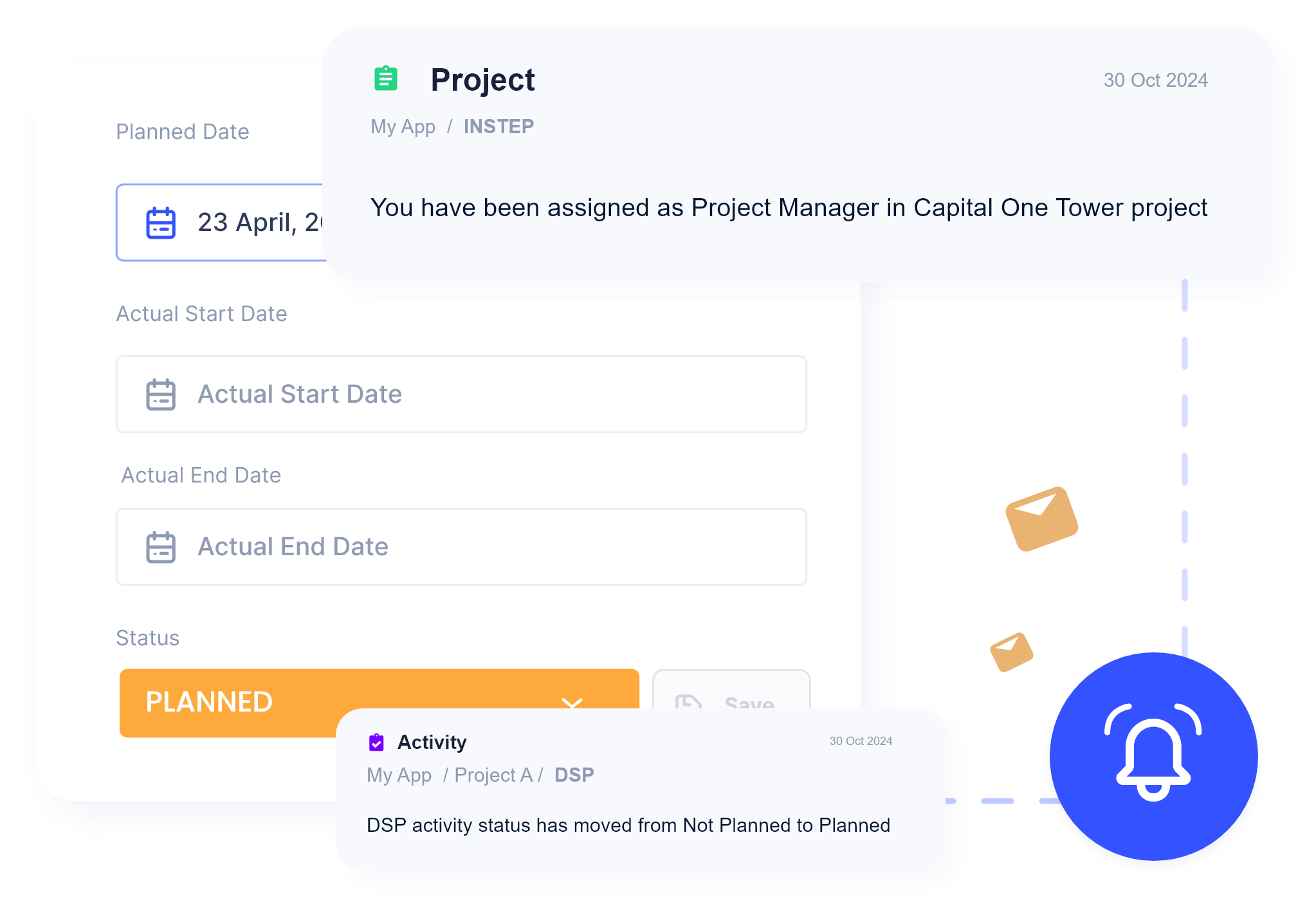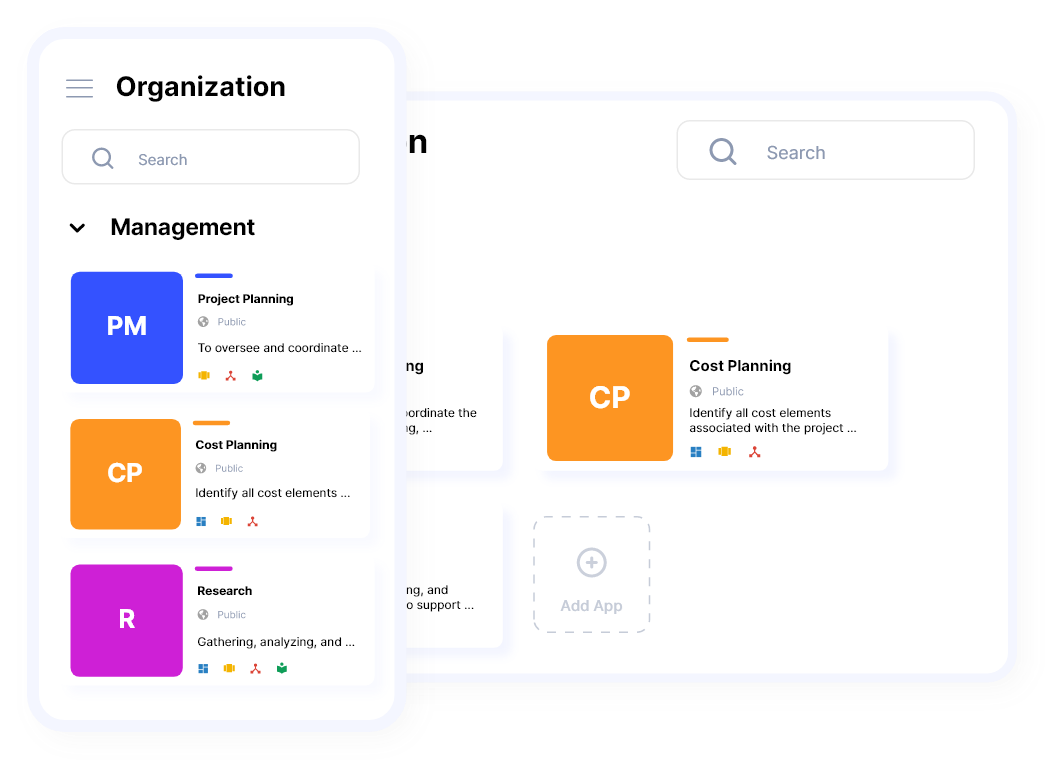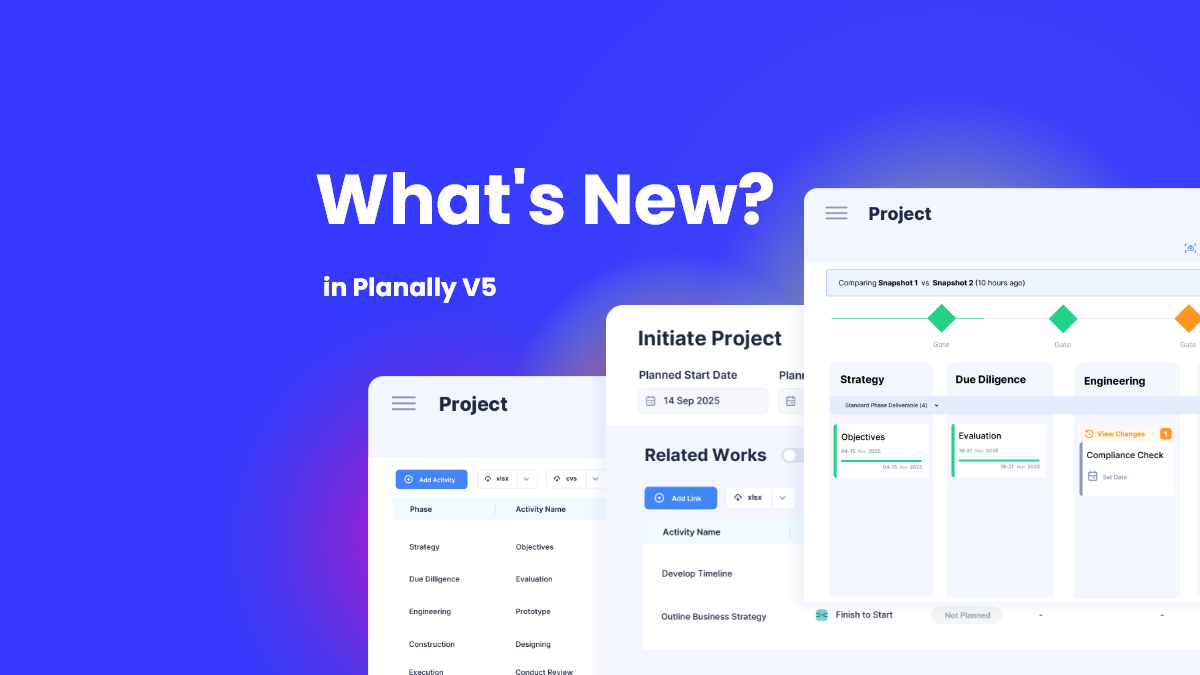 A New Kind of Debt Is Creeping In
A New Kind of Debt Is Creeping In
Why your workflows might be quietly undermining everything you’re building.
In the race to build faster, automate more, and digitize everything, most organizations have kept their eyes locked on one familiar enemy: technical debt. It’s the code you meant to refactor. The outdated systems you’re still duct-taping together. The architectural choices you made under pressure that now slow everything down.
But there’s another kind of debt—quieter, murkier, and far more pervasive—that’s silently draining your team’s time, energy, and momentum: process debt.
Process debt isn’t about bugs in your code. It’s about friction in your workflows. It’s the bloated approvals that never got rethought. The manual steps that should’ve been automated three quarters ago. The duplicate systems, band-aid fixes, and workarounds that slowly calcify into how your organization actually runs.
And here’s the hard truth: even the cleanest code and the slickest tools can’t save a company weighed down by broken processes.
According to McKinsey, companies are now hitting a digital transformation ceiling—not because their tech stacks aren’t modern enough, but because their operational workflows can’t keep up. Every outdated process is a tax on growth. Every workaround is a liability. Every “we’ve always done it this way” is a red flag.
If you’re still focused on eliminating technical debt while ignoring the inefficiencies baked into your day-to-day processes, you’re optimizing the wrong problem.
This post is your invitation to shift perspective—to see process debt for what it is: the new tech debt. And just like technical debt, if left unchecked, it compounds.
A Quick Recap: What Is Technical Debt, Really?
In software development, technical debt refers to the cost of choosing an easy or limited solution today instead of a better approach that would take longer. Like financial debt, it accumulates interest. Over time, these quick fixes slow down development, increase maintenance overhead, and make innovation harder to achieve.
At its core, technical debt emerges when teams prioritize speed over structure. That might mean skipping tests, patching old code instead of refactoring, or launching before fully considering system architecture. These decisions often make sense in the moment, especially under pressure to ship. But without deliberate follow-up, they leave behind brittle systems and bloated backlogs.
 According to McKinsey, companies that fail to address technical debt can spend up to 20 percent of their IT budget on remediating issues caused by inefficient code and outdated architecture. The real cost is not just financial. It is the delay in shipping, the duplication of work, the loss of focus when teams spend more time maintaining than building.
According to McKinsey, companies that fail to address technical debt can spend up to 20 percent of their IT budget on remediating issues caused by inefficient code and outdated architecture. The real cost is not just financial. It is the delay in shipping, the duplication of work, the loss of focus when teams spend more time maintaining than building.
Most leaders are now familiar with the drag of technical debt. It’s part of the modern product conversation. But another type of debt is quietly eroding momentum in every other part of the business. Unlike code, it hides inside workflows, approvals, and daily tasks. It’s less visible, but no less damaging.
Enter Process Debt: The Hidden Tax on Productivity
When messy processes become the default, your teams pay the price daily.
Every organization has them. The spreadsheet passed between teams for approvals. The workarounds created to sidestep legacy systems. The multi-step manual tasks that should have been automated months ago. These are not just inefficiencies. They are symptoms of process debt.
Process debt is the accumulation of operational drag that comes from relying on outdated, fragmented, or overcomplicated workflows. It builds quietly—often in the name of speed or flexibility—and then sticks around, silently taxing your teams’ time, focus, and momentum.
 Unlike technical debt, which lives in code, process debt embeds itself in the way people work. It shows up as:
Unlike technical debt, which lives in code, process debt embeds itself in the way people work. It shows up as:
- Manual workarounds that bypass systems because it’s “just faster that way”
- Duplicated tools introduced by different teams solving the same problem independently
- Obsolete approval chains that no longer match decision-making hierarchies
- Inefficient handoffs between teams or platforms with no clear owner
According to a McKinsey report, nearly 70 percent of digital transformations stall because of unresolved process issues, not technical failures. Technology alone cannot fix what is fundamentally a workflow problem.
As organizations grow, layers of complexity pile up. Without regular review, temporary fixes become permanent. Over time, this invisible debt weighs down innovation, slows delivery, and blocks scalability.
Even the most modern, tech-forward companies are not immune. When processes are layered on top of one another without strategic clarity, the result is operational friction. And that friction compounds.
The result? A business that looks digital on the outside but struggles to move with agility on the inside.
Process Debt vs. Tech Debt: Two Sides of the Same Problem
Different origins, same impact: complexity, drag, and delay.
At first glance, technical debt and process debt may seem like separate challenges. One lives in your codebase, the other in your daily routines. But beneath the surface, both are forms of deferred maintenance. Both slow your teams down. And both cost more the longer you ignore them.
The key difference? Tech debt disrupts your systems. Process debt disrupts your people.
To lead with clarity and scale with confidence, you need to manage both. Here’s how they stack up:
|
Aspect |
Technical Debt |
Process Debt |
| Origin | Quick fixes in code, outdated architecture | Workarounds, manual tasks, legacy processes |
| Impact Area | Software development, IT infrastructure | Operations, workflow execution, team collaboration |
| Symptoms | Bugs, rework, sluggish systems | Bottlenecks, duplicated work, inconsistent handoffs |
| Hidden Costs | Increased maintenance, slower innovation | Lost productivity, higher labor costs, decision latency |
| Management Approach | Refactoring, modernization, technical audits | Workflow audits, process reengineering, strategic simplification |
| Risk Over Time | Technical stagnation, innovation backlog | Operational drag, inability to scale, reduced adaptability |
| Primary Fix | Upgrading code and systems | Streamlining, documenting, and automating processes |
As organizations scale, the spotlight is shifting. Technical debt still matters, but process debt is emerging as the more dangerous bottleneck. Research shows companies lose up to 30% of their time to repetitive, manual tasks that could be streamlined or automated.
Process debt compounds daily. Unlike technical issues, it rarely throws errors. It just slows everything down until performance plateaus and progress stalls.
Smart teams know: clean code won’t save you from a broken process. Clean workflows will.
Why Process Debt Is the New Tech Debt
Today’s tools can’t fix yesterday’s thinking.
In the race to modernize, organizations have poured time and capital into digitization. But somewhere along the way, they started mistaking new tools for better workflows. The result? A rising tide of process debt that now weighs more heavily on performance than technical debt ever did.
Process debt accumulates when teams layer automation onto outdated processes, create ad-hoc workarounds, or continue relying on approval chains that no longer reflect how the business actually operates. Instead of driving efficiency, these decisions add complexity, reduce agility, and slow teams down.
 According to McKinsey, nearly 70 percent of digital transformation initiatives fall short of expectations due to internal resistance, siloed processes, and outdated ways of working — not because the technology failed [source]. The problem isn’t the platform. It’s the process.
According to McKinsey, nearly 70 percent of digital transformation initiatives fall short of expectations due to internal resistance, siloed processes, and outdated ways of working — not because the technology failed [source]. The problem isn’t the platform. It’s the process.
The shift to hybrid and remote work has further exposed fragile, inflexible workflows. Manual handoffs, disjointed systems, and invisible steps create friction across teams trying to collaborate in real time.
At the same time, compliance expectations are rising. Processes that once passed audit are now liabilities if they lack transparency, documentation, or control points. As regulations evolve, legacy workflows that rely on human memory or tribal knowledge become critical failure points.
And here’s the kicker: digital transformation can stall not because the technology isn’t good enough, but because the processes it was meant to improve are fundamentally broken.
Process debt is no longer the quiet cousin of tech debt. It’s the main reason high-growth companies slow down, the silent killer of scalability, and the root cause of operational drag. The systems are in place. What’s missing is clarity, consistency, and the courage to rethink how work actually gets done.
How Process Debt Shows Up in Real Life
It’s not hypothetical. You’ve seen this before—probably this morning.
Process debt rarely announces itself. It lives in the cracks, slows down your best people, and adds friction to what should be fluid. These aren’t abstract issues—they’re the small inefficiencies that silently scale into big problems.
Here’s what process debt looks like in the wild:
Manual Data Entry in a World of APIs
You’re collecting the same customer info across multiple systems, manually. Despite having integrations available, your team still relies on spreadsheets or copy-pasting between platforms. This slows velocity, increases error rates, and wastes valuable time.
Shadow IT Workarounds
When teams can’t find a fast way to do something within approved systems, they invent their own. A Notion page here, a Google Sheet there, maybe even a rogue Zapier automation. These quick fixes feel efficient, but they introduce security risks and create process silos that no one can trace or govern.
Duplicated Automations Across Teams
Different teams are automating the same workflow in different ways, often unaware of each other’s efforts. This leads to inconsistent outputs, redundant tooling costs, and unnecessary complexity. The result? A fractured automation landscape that’s anything but efficient.
Approval Chains That No Longer Make Sense
Approvals still flow through people who left last quarter, or detour through layers that no longer reflect how your organization actually operates. These legacy chains slow down decisions and frustrate teams. Outdated sign-off paths are one of the most common culprits behind missed deadlines and unnecessary delays.
Each of these examples may seem like a one-off, but they add up. They reduce agility, dilute accountability, and quietly inflate operating costs. Spotting them is the first step. Fixing them is where the real transformation begins.
The Real Cost: Risks of Letting It Slide
Ignore it, and it won’t go away. It’ll just get more expensive.
Process debt rarely shows up all at once. It creeps in quietly. A manual approval here. A workaround there. Before long, your teams are spending more time managing inefficiencies than delivering value. What starts as a temporary fix snowballs into a long-term drag on productivity and growth. The costs are real, and they compound fast.
Lower Efficiency
Every redundant step, unclear handoff, or manual intervention adds friction. Teams move slower, alignment weakens, and projects take longer than they should.
Higher Labor Costs
When processes break down, people pick up the slack. That means more hours spent on repetitive tasks, more headcount to manage inefficiencies, and higher costs to achieve the same outcomes.
Poor Visibility
Disjointed workflows lead to fragmented data and inconsistent reporting. Leadership lacks a clear line of sight into what’s working, what’s blocked, and where risks are hiding. This lack of visibility undermines decision-making and introduces compliance and governance gaps that can’t be patched with technology alone.
Blocked Scalability
Outdated processes don’t scale. What works for a 10-person team collapses under a 100-person org. Process debt locks companies into rigid structures, making it harder to adapt, expand, or innovate at speed.
Letting process debt pile up is like building a skyscraper on a shaky foundation. It may hold for a while, but every floor you add increases the risk. The good news? Once you start addressing it, everything else starts moving faster.
Breaking the Cycle: How to Identify and Fix Process Debt
You can’t automate your way out of chaos—but you can rewire it.
Process debt doesn’t vanish with more tools. In fact, layering automation on top of inefficiency often deepens the problem. To eliminate process debt, organizations must prioritize clarity over convenience and strategy over speed. Here’s how to start:
1. Audit Workflows Often
What gets measured gets improved. Conduct regular audits to surface bottlenecks, redundant steps, and manual handoffs that no longer serve the business.
2. Make Process Ownership Everyone’s Job
Don’t silo accountability. Empower teams to question, document, and evolve their own workflows. A culture of shared ownership drives continuous improvement and avoids institutionalized inefficiency.
3. Fix Before You Automate
Automation is only as smart as the process it runs. Streamline and simplify workflows before embedding them into systems. Otherwise, you risk locking in bad habits at scale.
4. Avoid Patchwork Fixes
Quick fixes may solve today’s problem but often create tomorrow’s debt. Resist the urge to add steps or manual workarounds and instead prioritize foundational, systemic updates.
5. Link Every Process to Strategy
Every workflow should directly support your business goals. If it doesn’t, it’s either noise or outdated. Align processes with customer expectations, compliance standards, and long-term growth priorities.
The Planally Advantage
Your workflows should work for you, not against you
Process debt thrives in complexity. Planally cuts through it.
Rather than stacking more tools on top of outdated systems, Planally helps organizations reimagine how work flows. It replaces tangled, manual processes with clarity, automation, and agility—turning slow, fragmented workflows into streamlined engines of productivity.
Planally is not just another platform. It’s a smarter way to work.
 Visualize and Simplify Workflows
Visualize and Simplify Workflows
See every step, every dependency, and every inefficiency in one intuitive view. Planally’s visual workflow builder lets teams untangle complexity and simplify without guesswork.
Automate Intelligently, Not Blindly
Automation is only valuable when it serves strategy. Planally helps you automate the right tasks at the right moments, preventing automation sprawl and redundant effort.
Eliminate Redundancies with Clarity
Uncover overlaps, remove duplicated processes, and align teams around a single source of truth. With Planally, process optimization becomes continuous, not reactive.
Audit, Adapt, and Scale with Confidence
Track every process. Refine in real time. Planally gives teams the tools to stay agile and aligned, no matter how fast they scale or how often priorities shift.
The more complexity grows, the more essential it becomes to rethink how work works. Planally delivers the operational clarity modern teams need to move fast, stay lean, and reduce process debt before it slows them down.
Explore how Planally clears process debt →
Clean Processes. Clear Growth
In a landscape where speed, agility, and clarity drive performance, process debt is the silent force pulling your teams in the opposite direction. It accumulates in the margins—through outdated approvals, disconnected tools, and workflows that no longer fit the way you work. And while technical debt may be the well-known culprit in IT slowdowns, process debt is fast becoming the more universal threat to operational excellence.
 Winning in today’s world isn’t about adding more software. It’s about fixing what’s broken beneath the surface. Clean, streamlined processes empower your people to do their best work, unlock faster decision-making, and reduce the cost of complexity. According to McKinsey, organizations that invest in workflow redesign and process simplification see a 20 to 30 percent improvement in efficiency and employee satisfaction alike.
Winning in today’s world isn’t about adding more software. It’s about fixing what’s broken beneath the surface. Clean, streamlined processes empower your people to do their best work, unlock faster decision-making, and reduce the cost of complexity. According to McKinsey, organizations that invest in workflow redesign and process simplification see a 20 to 30 percent improvement in efficiency and employee satisfaction alike.
The advantage lies not in how much you automate, but in how clearly your processes support your strategy. Teams that prioritize clarity over chaos will always outperform the rest.
The time to reimagine how your organization works is now.
Frequently Asked Questions (FAQ)
1. What is process debt?
Process debt refers to the inefficiencies, redundancies, and manual workarounds that accumulate within workflows over time. Unlike technical debt, which lives in code, process debt embeds itself in daily operations—slowing teams down, reducing productivity, and blocking scalability.
2. How is process debt different from technical debt?
While technical debt stems from shortcuts in code or system architecture, process debt arises from outdated, fragmented workflows. The key difference is impact: tech debt disrupts systems; process debt disrupts people and daily execution.
3. Why is process debt becoming a bigger issue than tech debt?
As organizations digitize, they often modernize tools but ignore the workflows beneath them. Process debt now accounts for a larger drag on performance, with nearly 70% of digital transformation failures linked to broken or siloed processes—not faulty technology.
4. What are common signs of process debt?
Red flags include manual data entry, duplicated automations, outdated approval chains, and shadow IT workarounds. These issues may seem small but collectively slow teams down and inflate operational costs.
5. Can automation solve process debt?
Not alone. Automating a broken process only accelerates inefficiency. Organizations must streamline, audit, and simplify workflows before embedding automation to avoid locking in dysfunction at scale.
6. How does process debt affect scalability?
Process debt creates bottlenecks that prevent teams from growing efficiently. What works for a 10-person team may collapse under a 100-person org if workflows remain outdated, undocumented, or overly manual.
7. What’s the first step in addressing process debt?
Start with a workflow audit. Identify bottlenecks, redundant steps, and legacy processes that no longer align with strategic goals. Fix the process before you automate it.
8. How can Planally help reduce process debt?
Planally helps organizations visualize workflows, automate intelligently, eliminate redundancies, and scale with clarity. It turns disjointed tasks into streamlined, strategic workflows that support high performance and sustainable growth.




